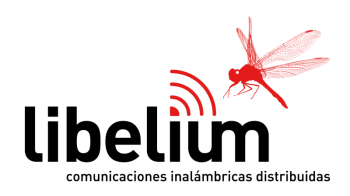 A couple of weeks ago I was talking with Alex about meshlium. I found out more about the project now. Last week I did an interview with Jose Luis Marina from Peopleware at a workshop of FOSS Bridge in Hanoi. Peopleware develops Osmius a very advanced monitoring tool to monitor all kinds of devices. He told me about their idea of using the open Squidbee hardware for their sensor networks. They want to be able to transfer data from sensor networks in an easy and affordable way. A scenario I see here is to use mesh networks for the transmission.
A couple of weeks ago I was talking with Alex about meshlium. I found out more about the project now. Last week I did an interview with Jose Luis Marina from Peopleware at a workshop of FOSS Bridge in Hanoi. Peopleware develops Osmius a very advanced monitoring tool to monitor all kinds of devices. He told me about their idea of using the open Squidbee hardware for their sensor networks. They want to be able to transfer data from sensor networks in an easy and affordable way. A scenario I see here is to use mesh networks for the transmission.
SquidBee is a project that uses an open hardware design as well as open-source software as a platform for remote control and sensing: "SquidBee is an Open Hardware and Source wireless sensor device. The goal of SquidBee is getting an "open mote" to create Sensor Networks." SquidBee uses the ZigBee self-organizing low power wireless mesh network protocol. ZigBee operates in the unlicensed 2.4 GHz, 915 MHz and 868 MHz ISM bands with data rates from 20-250 kbit/second, per channel. ZigBee is optimized for super low power operation so that the devices can be operated from battery power for long amounts of time. For long-running outdoor applications, powering the devices from photovoltaic panels would be an obvious technology choice. Using the 1mW XBee power level, the XBee maximum device-to-device range is 100 meters. At the 100mW XBee pro power level, the range is extended to 1KM. Each additional node can extend the range of the mesh network, since data passes through the nodes. (Download, June 16, 2008, http://lwn.net/Articles/260223/)
Behind the project is Libelium Comunicaciones Distribuidas, a SpinOff company of the University of Zaragoza (Spain) which has develop the ZigBee communication module. The Libelium team is formed by Marcos Yarza, Alicia Asín and David Gascón. The board has been developed by the Arduino team by David Cuartielles, Massimo Banzi, David A.Mellis and Tom Igoe. They come from different institutions in Spain, Sweden, Italy and New York (compare: http://www.libelium.com/squidbee/index.php?title=Who_is_behind%3F).

Some more info from the Squidbee wiki:
The main concepts behind SquidBee are:
* Self-powered
* Wireless Comunications
Repeat with me: "Ubiquity, Ubiquity, Ubiquity…"
How does SquidBee work?
- Acquires values from environment parameters: temperature, humidity, lightness, presence, pressure or (almost!) whatever you can sense.
- Operates with these values, when required.
- Transmits these values using a low power comsumption wireless technology (ZigBee).
- Sleeps until next timeout and repeats from the first stept.
Second step is not always necessary, depending of the calculations needed it may be better to make them in receiver computer to save nodes energy.
An open mote? What does it really mean? It means every part of the mote is accessible and can be studied, changed, personalized, … From the schematic circuit to the source code of the programs that are running inside the mote.
Who is interested in SquidBee? Anybody who is researching in the environment monitoring field. This is also an educational project so that universities can offer to the students a multi-learning device. With SquidBee people can learn at the same time electronic, programation, communications… and everything in just one device.
Who is supporting SquiBee? The board inside SquidBee has been developed by the Arduino team. The communications module wich lets the node transmit through a ZigBee module has been developed by Libelium. Both components are open hardware and they have a really strong community support. A specialized wiki related to SquidBee and the Sensor Networks will be created soon. There, all the Arduino and Libelium tutorials and examples will be shared and other research teams will be able to exchange their knowledge with the community.
What can I do with SquidBee? The main concept is: "sense what you want where you want and transmit it".
Two configurations of SquidBee? What is it exactly? Using the same board and communications module we have created 2 kinds of SquidBee: the sensor mote and the gateway. The first one is the self-powered sensor mote and the second is the computer USB connected receiver.
Can I integrate SquidBee into a wireless 802.11 Mesh network? Yes! We have also developed an outdoor Mesh Router: MeshLium which you can use to collect the information using the ZigBee protocol and transmit it to the mesh network using the Wifi technology (802.11). (Version, May 15, 2008, 15.22, http://www.libelium.com/squidbee/)
mehr zu dem Thema hier: http://www.linuxdevices.com/news/NS3913242202.html
hi guys, great article,
thanks